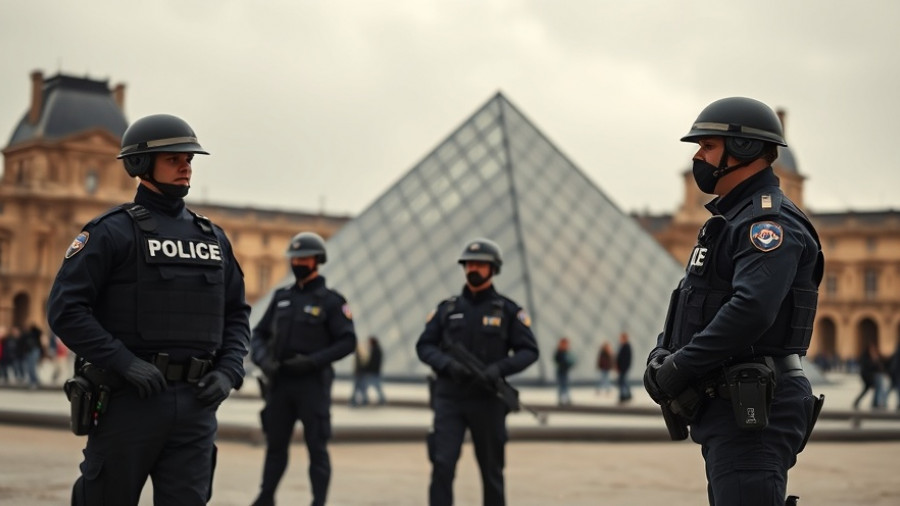
The Louvre Heist: A Cultural Shockwave
The recent robbery at the iconic Louvre Museum in Paris has sent ripples through the cultural and art world, stirring concerns about safety and security measures in some of the globe's most treasured establishments. The heist, which occurred during a busy tourist season, raises unsettling questions about the vulnerabilities of cultural institutions amid rising thefts targeting art and valuables across the globe.
In 'Louvre Robbery: Here’s What We Know About Heist As Paris Museum Closed Sunday,' the discussion dives into the implications of a significant art theft, prompting a deeper analysis of museum security challenges.
Understanding the Event
Reports indicate that a masked individual successfully breached the museum's security, stealing several irreplaceable works of art. While the full list of stolen items is yet to be released, preliminary analyses suggest that the pieces targeted were not only valuable monetarily but also held significant historical and cultural worth. These multifaceted implications of such thefts highlight the challenging balance between public access and safeguarding national treasures.
A Trend in Museum Thefts
This incident aligns with a disturbing trend of art thefts affecting prominent museums worldwide. Just last year, a wave of high-profile heists resulted in the theft of many valuable pieces from institutions in places as varied as Rome to New York. The brazen nature of these crimes has led experts to scrutinize security protocols at museums, especially in metropolitan areas with vast tourist appeal.
Potential Impacts and Reactions
The immediate impact of the Louvre robbery has prompted officials from around the globe to revisit their museum security strategies. Eyeing this recent incident, curators and security teams will likely push for enhanced technologies and more stringent protocols. Additionally, public discussions around art safety may result in governmental policymaking shifts, potentially affecting how funding is allocated towards national cultural institutions.
Connecting to Current Events and Legislation
As discussions around theft risks in cultural institutions unfold, they intersect with broader trends in national crime reports. Increased crime rates in urban centers, alongside issues like the opioid epidemic and homelessness crisis, signal larger socio-economic factors contributing to such brazen acts.
Public Sentiment: The Emotional Response
For many, museums like the Louvre are not merely places of entertainment; they represent a collective heritage and cultural identity. The theft has left art lovers and historians distraught, sparking conversations about the meanings of these works beyond their insurance value. This emotional connection to art underscores the need for ongoing education about cultural preservation.
Proactive Measures for Preservation
In the wake of the Louvre robbery, it becomes exceedingly clear that museums must adopt proactive measures to safeguard against thefts. Potential solutions could include integrating advanced surveillance technologies, increasing security personnel, and cultivating community engagement initiatives to encourage vigilance among visitors. By fostering a sense of shared responsibility for these cultural treasures, museums can help bolster their defenses.
Looking Ahead: Future Predictions
As major cities grapple with art security, predictions regarding governmental funding and policy direction in the realm of museum maintenance and protection seem likely. Economically pressured regions may struggle to justify the costs associated with heightened security, leading to a critical conversation about prioritizing cultural safety amidst budget constraints.
In summary, the Louvre robbery has highlighted the heightened risks facing cultural institutions worldwide. As we delve deeper into potential solutions and ramifications, it is essential for stakeholders to come together and forge a path forward that preserves our shared heritage. The restoration of public trust will hinge not on desperation but rather in making these institutions not just places of preservation, but safe havens for humanity's shared legacy.
 Add Element
Add Element  Add Row
Add Row 



Write A Comment